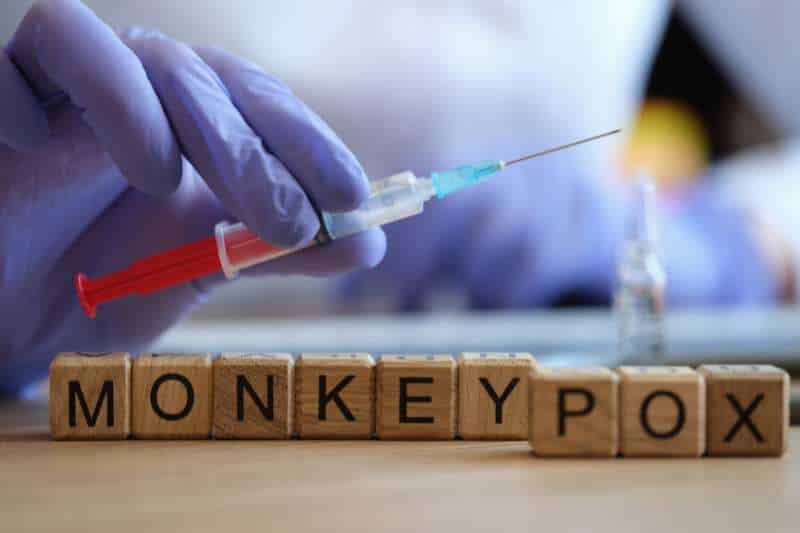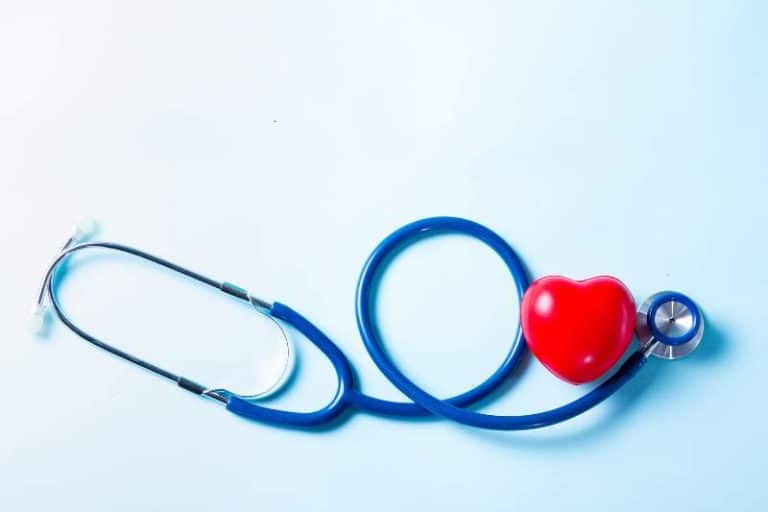The Latest Update on the Monkeypox Outbreak

The latest update on the ongoing outbreak of monkeypox confirms a cluster of cases in the United Kingdom. While it is too early to pinpoint the exact cause of this disease, the outbreak has already spread worldwide. The occurrence of monkeypox in humans is rare, but it is still possible to contract the disease from other animals.
Monkeypox
Here’s what you need to know. Learn the symptoms, transmission, treatment, and prevention.
Symptoms
The classic monkeypox rash is often found on the extremities and face, but the outbreak that is sweeping the world is not what we might expect. The rash usually begins on the anus and genitals and often does not spread to the rest of the body. In these cases, the symptoms of monkeypox may be subtle, but they are still serious. The rash may last anywhere from 14 to 28 days.
While the virus is very contagious, outbreaks of monkeypox are unlikely to involve more than a handful of cases and Covid-style transmission. The disease is preventable with common household disinfectants. In addition to the vaccine, there is no specific treatment for monkeypox. However, it is essential to follow recommended health care guidelines in order to prevent contracting the disease. There is no vaccine or cure for monkeypox, so the best course of treatment for this disease is self-isolation and careful monitoring.
People contract monkeypox through skin-to-skin contact with an infected person. The disease can also spread through respiratory droplets and contaminated bedding. WHO epidemiologist Maria Van Kerkhove says the virus spreads through skin-to-skin contact and may increase the risk for spreading the disease to gay men. People who have come in contact with a person with monkeypox should see a healthcare professional.
In recent years, the virus has spread to humans and is endemic in monkeys. While this disease is rare outside Africa, there have been outbreaks in the US, Europe, and Asia. The disease causes mild symptoms and is less contagious than smallpox. The disease can be transmitted from human to human, although humans are less likely to contract monkeypox than monkeys. In most cases, patients recover without treatment.
After infection, the monkeypox illness typically runs its course in two to four weeks. The initial symptoms include a fever, chills, and fatigue. The affected person will have swollen lymph nodes and facial lesions. The lesions, called “pox,” are dark, fluid-filled bumps that will scab over in two to four weeks. It may be accompanied by a headache or a rash.
Transmission
The primary mode of transmission of monkeypox is through direct contact with an infected person or contaminated material. However, researchers are investigating other methods of transmission. For example, the virus can spread through the semen of an infected person. If the person with the disease is in contact with someone who is not infected, the semen may carry monkeypox. The CDC reports there have been nearly 1,400 confirmed cases of monkeypox worldwide since May 2015.
While there is no way to confirm whether a person infected with monkeypox has contracted the disease from an infected person, there are some cases reported in countries such as Canada and the United States. Most cases have been diagnosed in men who have had sex with other men. CDC reports that the first case was misdiagnosed as a severe herpes infection. A recent outbreak of monkeypox in North America is also the second largest outbreak in history.
The first phase of the disease is the infection of the dermis after infection by an infected person or animal. After this infection, the virus spreads through the body’s lymphatic system, resulting in primary viremia and a systemic infection. Later, it causes skin lesions and secondary viremia. There are several ways that monkeypox can be transmitted, including through oropharyngeal secretions. The risk depends on the size and density of the lesions, the duration of contact, and the survival of the virus.
The disease has a fatality rate of 1 to 10 percent. The severity of the disease depends on several factors, including the type of virus and the patient’s health. The virus is more prevalent in the Congo Basin than in the West, though scientists have not yet discovered an animal reservoir in affected areas. In the United States, monkeypox is transmitted to humans mainly through direct contact with infected monkeys.
In non-endemic countries, a single case of monkeypox carries a high risk of transmission, including a high mortality rate. To help prevent the spread of the disease, health care providers should report suspected cases of monkeypox immediately. Regardless of any other diagnosis, these cases should be reported to the appropriate authorities. Case definitions vary widely from country to country. For example, a probable case of monkeypox should be reported to the WHO. Similarly, a confirmed case should be reported to the national Focal Points of the IHR.
Treatment
Although the incidence of monkeypox is low, the disease is highly contagious. During the outbreak, individuals infected with monkeypox are more likely to contract other cases of the disease. The disease can be spread through large respiratory droplets, broken skin, and mucous membranes. Monkeypox is not spread from person to person; instead, it is spread through extended contact and large respiratory droplets within a six-foot radius. Cases of monkeypox are typically linked to international travel and contact with African rodents.
While there is no known treatment for monkeypox, infection can be controlled by avoiding sex with infected people and wearing a dental dam. Patients with the illness should refrain from sexual activity until the sores heal and a fresh layer of skin forms. CDC guidelines for home isolation and infection control can be followed to reduce the spread of the disease. If you’re not sure, you can contact the CDC for additional information.
While the symptoms of monkeypox are similar to those of smallpox, they may last longer than three weeks. After these symptoms go away, the patient may experience a rash or skin lesions. The lesions are hard and can resemble smallpox lesions. Typically, monkeypox lasts between two and four weeks. Patients with symptoms should seek medical advice if they suspect that they’ve been in contact with an infected person.
Vaccines are not available for monkeypox, and prevention is important. Vaccines and antivirals can help prevent the spread of the disease. However, they are not a cure for the disease. Infected people may develop the virus again, but there are also antiviral treatments that can reduce the risk of infection. The CDC recommends vaccination to prevent the disease and recurrence of the infection.
In the absence of an approved vaccine, treatment for monkeypox is limited to reducing the severity of the disease and keeping the patient comfortable. There are no specific antiviral medications for monkeypox, but health care providers may use antiviral drugs to treat smallpox in cases of monkeypox. A single antiviral drug, tecovirimat (TPOXXTM), is already approved for smallpox in the U.S., and is due to be approved for intravenous administration by the FDA in 2022.
Prevention
The primary method of prevention is to avoid contact with an infected person. During the first two weeks of the rash, the infected person should stay in their home, away from other people, and avoid sexual activity with them. If possible, clean clothing and bedding as well as avoid contact with infected persons and infected materials. If possible, isolate yourself in an isolated medical facility. Upon resuming sexual activity, contact with an infected person should be avoided, especially when you are in close physical contact.
The vaccine is effective against most strains of monkeypox. However, an unvaccinated person can still develop the disease. Monkeypox has a high fatality rate, especially in young children. Therefore, it is necessary to vaccinate children from three to nineteen years of age. In addition, it is important to avoid consuming animal products unless cooked thoroughly. Further, preventing the spread of monkeypox can be done by avoiding contact with infected animals.
Monkeypox is a contagious viral infection that is transmitted through close personal contact. The symptoms typically start as a general feeling of illness and may progress to skin rash similar to chickenpox. Monkeypox may affect the face, genitals, and body, so prevention is crucial. The symptoms typically begin with general fatigue and fever. Acute cases may also present with severe malaise and even death.
Vaccines for monkeypox can be effective in preventing the disease and the severity of the disease. The vaccine contains live, nonreplicating monkeypox virus that is capable of preventing infection and mild disease. However, there are no vaccines that can completely prevent the virus, but there are still treatments available to treat it when it has been contracted. This includes smallpox vaccine and vaccinia immune globulin.
Monkeypox Explained Clearly
Conclusion
Monkeypox can lead to a variety of symptoms, which generally begin seven to 14 days after exposure. A fever, chills, headache, and muscle aches are some of the common symptoms of monkeypox. A rash that begins on the face will usually spread to other parts of the body, lasting two to four weeks. In rare cases, the rash may also spread to the genitals and the inside of the eyelids.
For more articles please visit www.lifestylebuz.com





